Well, folks, this has been a reasonably relaxed week with only one "long distance" day trip but a number of excursions to places a little closer to home .
Syracuse
One cannot talk about Syracuse without talking about its history. At one time, it was the most powerful city in the Mediterranean. Today we can see the footprint of Ancient Greece in the amphitheatres and architecture still evident in the reasonably well preserved archaeological sites. The city is about 2700 years old and was the birthplace of Archimedes. At its peak during the Greek period, it aligned itself with the Spartans and Corinthians, and at one point defeated the city state of Athens. Over time, however, the usual outsiders moved in and took over – Romans, Byzantines, Arabs, the Normans, the Spanish, Swabians, Austrians – and Syracuse lost its pre-eminent position, with Palermo becoming the capital of Sicily.
Geographically, the city is split between the mainland [which has most of the better preserved Greek and Roman sites] and the island of Ortygia, which is the heart of the city albeit an off to one side heart [but then, I guess hearts are usually off to one side, so that's OK] . The island is linked to the mainland by Ponte Umbertin, built in the second half of the 1800s and named after Umberto I, the then sovereign of Italy.
Along with the other Val di Noto cities, it was hammered in the 1693 earthquake. And like those other cities, the rebuilding took on the Baroque flavour. A good example of that today is the Cathedral in Piazza Minerva/Piazza Duomo. However, virtually all of the surrounding buildings in the piazzas were also built/rebuilt at that time so they too carry Baroque styling and embellishments.
It is not easy to get lost on Ortygia, given that it's only about 500 metres wide and 1000 metres long. However, in that space they have managed to cram in Cathedral/churches, city hall, piazzas, palazzos, military establishments, archaeological sites, markets, hundreds of restaurants/cafes/pasticcerias, up-market shops as well as houses, hotels and a multitude of buildings being renovated/removed/replaced. So with all of that, one doesn't actually get lost but simply misplaced . An easy place to wander, soak up the atmosphere, absorb the history, view the grandeur of days gone by, feed the inner man/woman and sample the vino. What more could you wish for. We thoroughly enjoyed our return.
Return to Noto
We decided to return to Noto on our way back from Syracuse, given that it was only about 8 kms off to the side of the highway. We would be able to time our arrival for the afternoon opening of the Noto Cathedral [given that it was closed by the time that we got around to checking it out last week] and we also thought that we would take Sir Fred's advice and check out the gelato at the gelateria where we had lunch on our previous visit [last week]. He rated it the best in Italy. So off we headed arriving at Noto at about 15 minutes before the Cathedral was to open but this time the gelato shop is closed [must work like the little old man and woman on the cuckoo clock...when one is open the other is closed.]
So we had to settle for only the cathedral and guess what ... we find that it is being renovated inside and most of its centre is filled with a huge set of scaffolding. Still, we scratched that itch from last week and can move on knowing that we tried. One thing about Noto that we omitted last week is that in 1986 they did another seismic survey of all of its significant buildings and found that most were in danger in the event of another sizeable shake. Sounds like they would be rated at about 10 – 20% on the NZ NBS. If fact, in the next big one in 1990, the cathedral dome and ceiling collapsed so the scaffolding may be part of the ongoing strengthening work being done in Noto.
Scicli [pronounced "Shickly"]
A number of cave dwellings and other archaeological finds indicate that the first people lived in the Scicli area back about 3000 BC. The main part of the city today sits at the base of a gorge, with older sections on the heights. Many of those, however, were badly damaged in the 1693 quake [Scicli lost 3,000 killed] . Over the years, the now familiar foreign management model applied in Scicli. It also suffered from the plague in the early 1600s which reduced the population from 11,000 to 4,000. So life in this part of the world for the “Sciclians” [and the rest of the population in this corner of Sicily] has not exactly been a bed of roses. Today, however, all we can say is that we met some of the nicest people on the trip thus far in this town. From shopkeepers, to baristas, to restaurant staff... everyone was very proud of their town and equally keen to ensure that you had an enjoyable experience while there.
There is a lot of Baroque evident throughout the town [courtesy of the big quake rebuild] but one building stands out – Palazzo Beneventano. This is one of those buildings where clearly, the architect or the chap commissioning the building [or both] was/were slightly demented. At the moment, it takes the prize for the most outrageous of all the Baroque embellishments we have seen to date. The building was described by the [now] well-known KGB spy, Sir Anthony Blunt, as the most beautiful of Sicily, ("the pale yellow-gold [of the stonework] in the sun buy an indescribable opulence") . Not quite how we would describe it but then we haven’t had KGB training. Still, it's a very interesting building.
Apart from its long history, its Baroque style, Al Ragu - a great restaurant [found by us and not Sir Fred] - and its very friendly folk, Scicli's other claim to fame is that it has been the location for a number of films and a particularly successful [Italian] TV series, Montalbano. Commissario Montalbano is the main character in books written by Andrea Camilleri, a highly respected Italian crime novelist. The Montalbano series is very well written and those who like a good police procedures story with a twist [ie, taking place in Sicily rather than the US or other similarly established locales] should give him a try. The first book in the series is “The Shape of Water”.
Portopalo di Capo Passero
We returned to the south coast again to check out some of the spots that we'd only glimpsed last week because it had been getting late in the day when we were in that area . This time we set off early morning under the threat of rain and sure enough Mother Nature obliged. Really heavy downpour which fortunately only lasted about 15 minutes. However, the roads were soon awash as the ground was too dry to sop it up. Half an hour later the sun came out, so not too much of a problem. We picked up the coast outside Pachino in the south eastern corner of the island and ran south to Portopalo. Outside town, we came across an old tuna factory. The fishermen used to spread their nets across the traditional tuna run areas along the coast, then drag their loaded nets up to shallow waters and gaff the fish on board their rowed fishing boats. Probably not a pretty sight and probably one activity that the animal rights people today would get excited about. However, it would have been a more sustainable form of fishing given that the nets were hand drawn and the fishermen did not have the dragging power of modern trawlers, hence catch sizes were much smaller [and more locals were in employment] . These traps and associated factories all eventually closed down because the large international trawlers were cleaning out the tuna schools further offshore and probably in a manner that would get the same animal rights people just as excited but with it being done offshore out of view, it does not draw as much attention.
Overlooking the factory is Castello Tarfuri, a quite splendid [but now sadly neglected - and rejected] modern castello built in 1936 for businessman Bruno di Belmonte, who owned the now defunct tuna trap/factory it overlooks. Apparently all the time that he owned it, it was simply the family’s “beach bach”...some bach. When the old man died, his sons sold the property to a local pharmacist who used it first as a home and then converted it to a five star hotel. When he subsequently died in 1990, the family squabbled over what to do with it, no one wanted to provide the maintenance for its upkeep, no one wanted to pay the caretaker so he left and, in effect, any security on the building went with him, and eventually it fell into a state of disrepair .
Looking inside, it was clear that it had become a doss house [or worse] for vagrants and local hooligans who had destroyed anything of worth which is a crying shame because outwardly it still retains its earlier grandeur. Apparently, Michael Schumacher’s wife saw it on one of her visits to this area in 2008 and was interested in purchasing it but regrettably [for the locals and the building itself] that came to nought. Local thoughts are that there was resistance to a foreigner buying Italian assets [where have we heard that sort of claim before] or simply the cost of renovation would have been too high. For a more extensive review of the Castello and its history [and its sad state today] see: <http://www.derelictplaces.co.uk/main/showthread.php?t=26592#.Una5WifHhiw>
Isole di Correnti
Bruno di Belemonte stipulated that the Castello was to be constructed of the stone from Isole di Correnti, the small island a couple of hundred metres off the southern most point of Sicily . At low tide, the surface between the shorelines of the islands is exposed so in effect the island becomes the southern-most part. While Italy has two islands further south [Lampedusa and Pantelleria – both of which are closer to Tunisia than Sicily], this is generally considered the southern tip of Italy. The day we visited, there was quite as crowd mostly Italians, checking out the landmark. The tide was in at the time... so the Isole retained its island status and the southern tip of Sicily moved back a couple of hundred metres.
Plastic greenhouses
Take the southern tip of Sicily and scribe a 20 km radius arc left and right of that point from the south coast to the east coast and you will define the main tomato growing area on the island. We came across literally thousands of plastic greenhouses stretching as far as the eye could see from the road, all filled with tomato plants. That is a lot of tomatoes, but then tomatoes are one of the main ingredients of Italian cuisine . Speaking of food, we have both remarked on the old fashioned taste of most of the vegetables, the tomatoes and potatoes especially. They have a real strength to them and make some of the supermarket varieties back home seem bland by comparison.
Cava D’Ispica
Located between the towns of Ispica and Modica is a river valley [about 13 kms long] containing a significant number of troglodyte dwellings, small shrines and early Christian [and other] cemeteries. The first human settlements in the area date back to the Neolithic times. The caves that dot the valley cliff face were initially created by nature [wind and water] and then adapted by the early people for shelter. The cave system was badly damaged in the 1693 quake but there is evidence to suggest that they were still occupied some time after that.
We visited a large early Christian period [4th-5th Century] catacomb that contained over 450 burial tombs. Nearby was a site known locally as Caves Falls, a multi-storey cave dwelling complex . Back in the day, they would move from one level to another by internal staircases and rope ladders.
We also visited a local water mill museum which while small, provided a good picture of life in the caves and showed how they harnessed the power of the underground water systems to power rotary grinding stones to produce flour. The particular mill we visited was established by our guide’s great-great-grandfather [our guide was in his 80s] and was still perfectly functional [and producing] today.
Memorable Meals Out
A couple memorable meals out this week - both lunches, both seafood.
- Scicli. Ristorante Al Galu. Here we started with a small glass of a ratatouille-like shellfish concoction - absolutely yummy. For our main, we had opted for an antipasti comprising 12 different samplings of seafood delicacies including swordfish, shrimps, prawns, sardines [like rollmops with a sweet green marmalade filling], whitebait [fritter style] and anchovies. We closed it with a lemon sorbet [to cleanse the palate, of course]. Total package was simply delightful and we then rolled home [slowly]
- Marina di Modica. We returned to Da Beatrice for another lunch after visiting Portopalo. After a brief discussion with the chef, we settled on crumbed fried anchovies and cosse alla marinara [mussels cooked in a mixture of tomato/white wine/chilly/parsley/garlic and capers]. The mussels were the small black shell version and the finished dish was superb [if a little piquant]. The anchovies were a dish Trish had wanted to try for some time and while not specifically on the menu, the chef agreed to make it. Excellent selection and we were highly satisfied with the result.
On our way to Scicli we passed under this bridge, the closest of the two large ones near Modica. Even though this is the smaller of the two, up close it is still a really big bridge. Simply amazing piece of engineering and an indication of how serious they take their highway building here. While lesser roads tend to be similar to NZ roads, following the curve of the hill and can involve some switchbacks to climb or descend, when it comes to highways here, straight and level is the order of the day .
“Modica - the city of 100 bells and 100 churches”
We mentioned last week that the Saturday lunchtime bells got a good old chinwag going between bell towers. The process was started by San Pietro’s [the main church’s] bells and each church around in turn responded by repeating the sequence followed by the acknowledging single solid peel from San Pietro. That process lasting about 10 minutes. Well, just to confuse the issue a little more, we had a marathon ringing session on Friday [1 Nov]. Big Ben [San Pietro] rang 201 times on Friday at lunchtime. Several other churches then joined the fray. Quite a session. The following day we learned that 1 Nov is All Saints Day and a public holiday here in Italy. The bell ringing bit was clearly part of that celebration. Either that or someone with a bell fetish has just escaped from the asylum ... But wait – just when you think you have a handle on the Modica bell system along comes Easter and they turn everything upside down – no bells from Thursday night till the morning of Easter Sunday, when they do their crazy time thing again .
Surprisingly, Scicli just 11 kms down the road is of the simple bong-bong-bong persuasion yet it has almost as many churches as Modica. So go figure...clearly there is no standard procedure. Must be a challenge when they switch priests around. Imagine the Scicli padre posted to Modica trying to get a word in at sermon time.
Well that’s the end of another week. Sadly, we have just realised that we have only just over six more weeks here in Italy before we climb back on the plane for home. We must have been having fun because time certainly has flown. Tomorrow, we cross the island [via Gela on the south coast] to Palermo where we will try our best not to offend anyone wearing a dark suit and sun glasses, and with bulges under their suit jackets or holding violin cases. Of course, the latter could just be on their way to the Symphony Orchestra, but why take chances.

 Modica, Sicily, Italy
Modica, Sicily, Italy
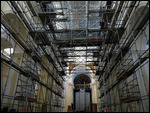

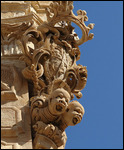
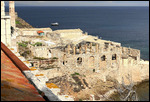
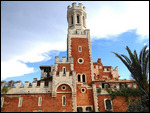
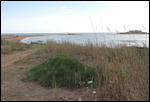
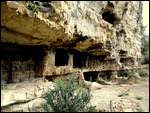
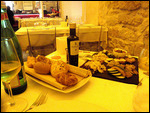


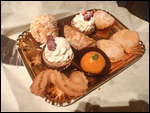
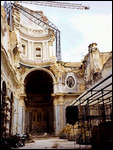
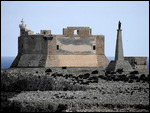





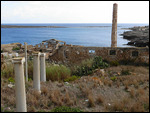
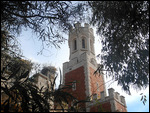
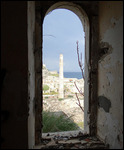
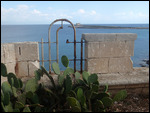
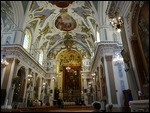

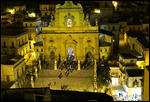

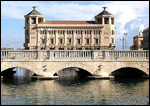

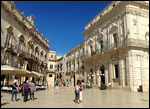
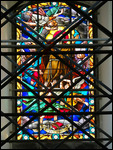

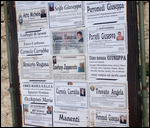
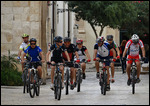
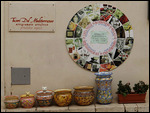



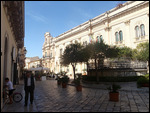
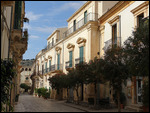
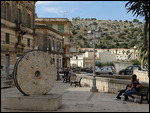
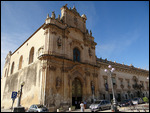
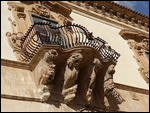

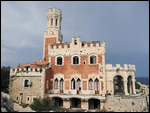
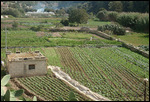



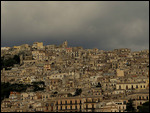

2025-05-23